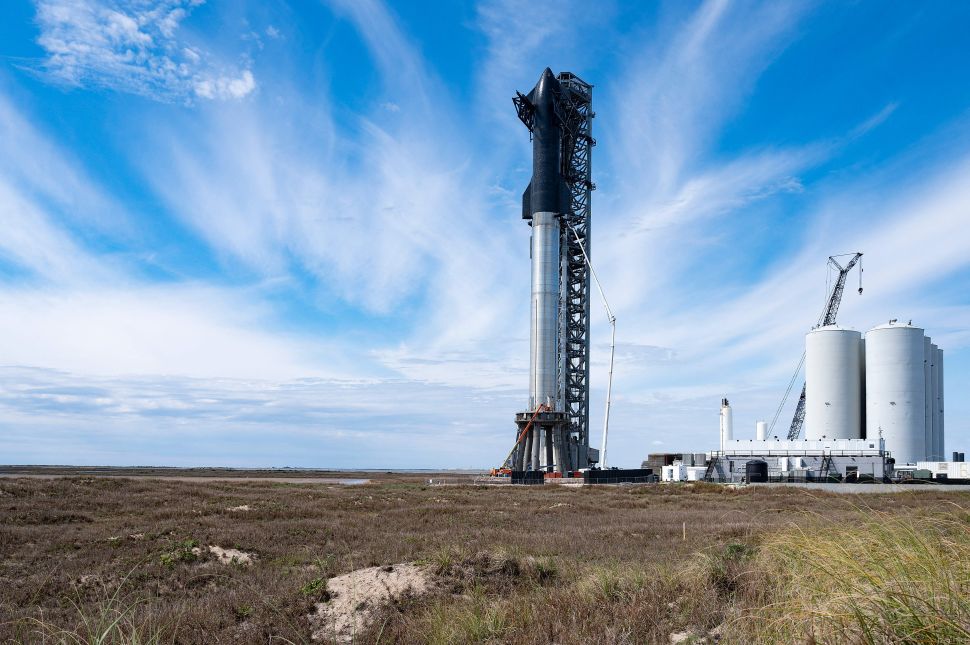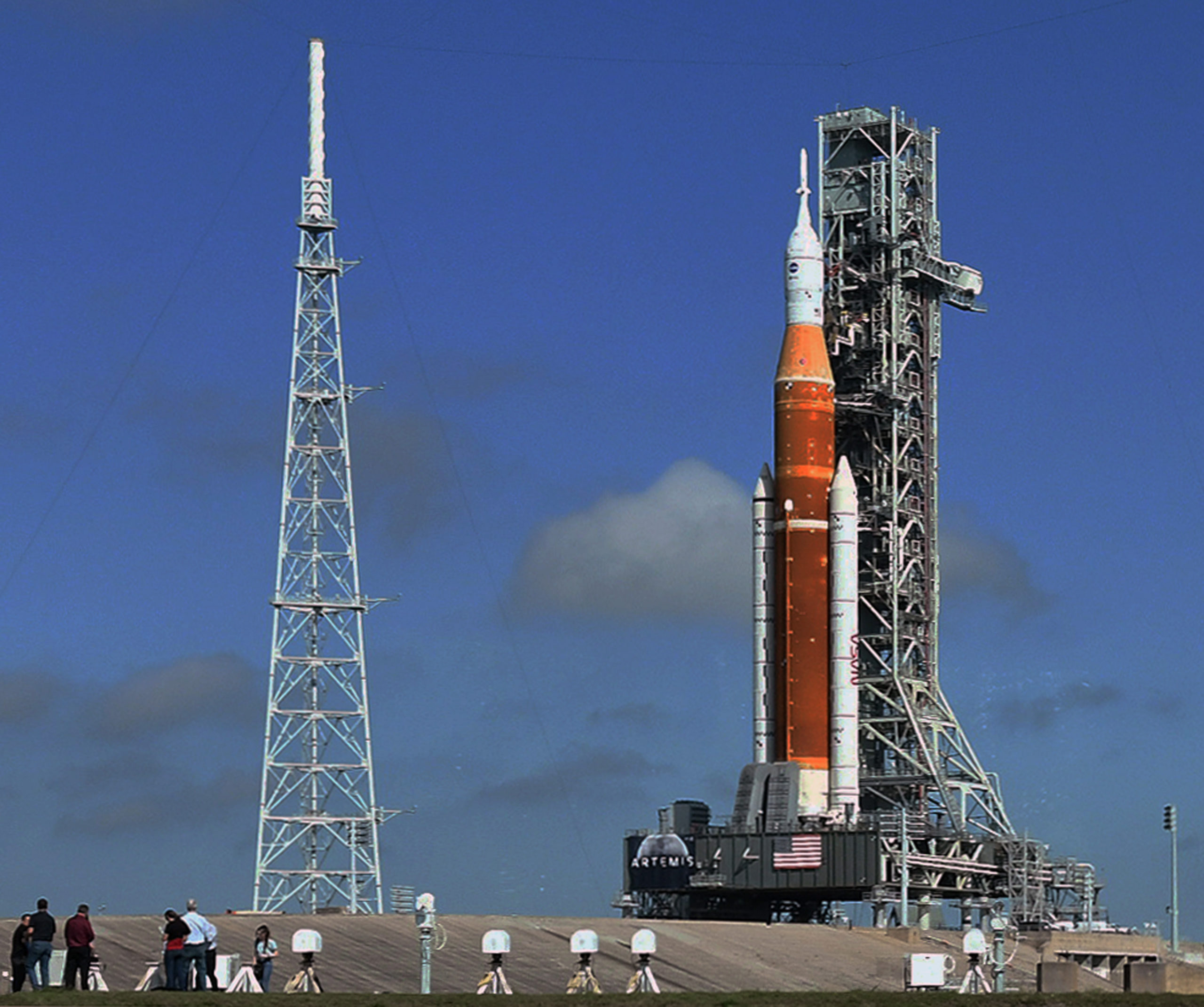For about a decade, NASA and SpaceX have every single been setting up a rocket aiming to mail humans to the Moon for the initial time given that the 1970s. Several years of progress and many billions of bucks afterwards, both rockets are now standing on their launch pads completely ready to blast off on their inaugural flights, possibly within just the subsequent couple of months.
The Starship rocket has been on a start pad at SpaceX’s take a look at website in Texas considering that early February. SpaceX CEO Elon Musk said on March 21 its initial orbital flight is anticipated to launch in May well, supplied that the rocket’s engines are manufactured and set up on time. NASA’s Area Launch Program (SLS), which was rolled out to a launch pad at the Kennedy Space Centre in Florida past 7 days, is concentrating on a equivalent start window.
Most significant rockets ever created
Both equally Starship and SLS are unparalleled in dimension, thrust power, and payload potential. Whichever flies first will be the most potent spacecraft introduced in historical past. Each rockets consist of an upper stage, built to have cargo and crew, and a chunkier lessen phase to increase the upper-phase capsule to their prepared altitudes.
SLS, which stands at 322 feet tall with its upper stage, Orion, is a bit shorter than the Saturn V rocket (363 feet) that sent American astronauts to the Moon in 1969, but has 15 p.c additional thrust pressure, which means it can lift a bigger mass. SpaceX’s finish Starship is 394 ft tall, earning it the tallest rocket at any time built. The original version created for Earth orbital flight will have about 500,000 lbs, or 230 tons, of thrust energy at sea stage, Musk stated in a tweet this week. Later on versions of Starship will possible boost thrust as it aims for extra distant places.
Two Moon rockets for distinctive reasons
While NASA’s SLS was designed with the Moon in brain all together, Starship was at first intended as a rocket to conquer Mars. If a rocket is powerful plenty of to have the payload essential for a crewed mission to the Crimson Planet, it’s surely capable of traveling astronauts to closer destinations, which include the Moon. In point, lunar and Earth orbital missions will be the major functions of Starship, at minimum in the commencing.
In September 2018, SpaceX signed its to start with lunar passenger: Yusaku Maezawa, a Japanese fashion tycoon. He will fly in a foreseeable future Starship for a multi-day vacation all over the Moon. The identical rocket is anticipated to replace SpaceX’s workhorse Falcon 9 to supply upcoming Starlink satellite missions to very low Earth orbit.
Neither SpaceX nor NASA has shown that their rockets can arrive at Earth’s orbit, a prerequisite for deeper place exploration. Starship’s test record is more encouraging. To day, SpaceX has done 5 large-altitude exam flights to 10 kilometers with distinctive prototypes of Starship’s upper stage. Its forthcoming flight with the booster connected will aim for Earth orbit, which commences at 160 kilometers. The exam will not inform us if Starship is completely ready for the Moon or Mars. But, if thriving, it will mark a important milestone in Musk’s quest for interplanetary vacation and allow for SpaceX to before long use the rocket for regular Starlink launches.

- SpaceX’s to start with orbital Starship SN20 is stacked atop its large Tremendous Large Booster 4 at the company’s Starbase facility in Texas.
The SLS, while never ever flown for orbital tests, will intention for the Moon on its first go. The future mission, dubbed Artemis-1, will send out an un-crewed Orion capsule to the Moon’s orbit for a month-extended journey. Future Artemis missions will endeavor a lot more sophisticated responsibilities: orbital intercepts, cargo landings, and eventually humans landing on the Moon’s surface area.
NASA officers reported in February Artemis-1 will have a few launch home windows among April and June. The SLS is at the moment becoming geared up for a “wet costume rehearsal,†or fueling take a look at, which will run a countdown until eventually 10 seconds right before motor ignition. A moist dress rehearsal is the last check right before a launch.
The Starship exam will have to have a flight license issued by the Federal Aviation Administration (FAA). The agency expects to full its evaluation approach for SpaceX before the close of March. NASA missions really do not involve a FAA license.
Vast price tag variation in the two rockets
Despite the two rockets’ numerous similarities, the SLS is a substantially more highly-priced task than Starship.
Considering the fact that its inception in 2011, the SLS software has charge NASA at least $20 billion, in accordance to a 2019 report by the U.S. Governing administration Accountability Workplace. A more modern evaluation from the Office of Inspector Standard, the federal auditor of NASA programs, estimated the initially 4 SLS missions would each individual cost a lot more than $4 billion, eight periods the initial projection established in 2012. The operational cost was described as “unsustainable†by NASA Inspector Normal Paul Martin during a Dwelling Science Committee hearing on March 1.
Boeing, the guide NASA contractor building the SLS, argued that, when modified for inflation, the cost of building SLS is only a quarter of that of the Apollo-era Saturn V rocket.
Elon Musk has estimated that the enhancement price of Starship is significantly less than 5 % of that of Saturn V, which interprets into $5 billion when modified for inflation, for every CNBC’s calculation. When in use, its operational charge would be a lot less than $10 million for every launch, Musk claimed through a SpaceX media occasion in Texas previous month. That is appreciably reduced than what SpaceX now rates for a launch with its lesser Falcon 9 rocket: $67 million.
